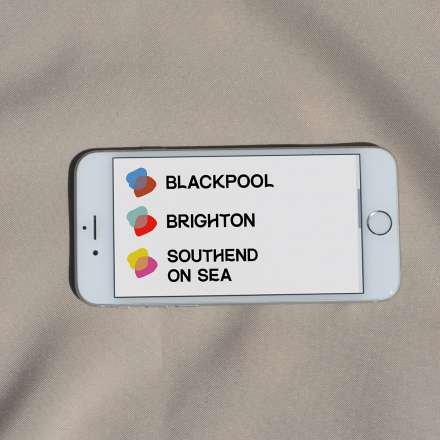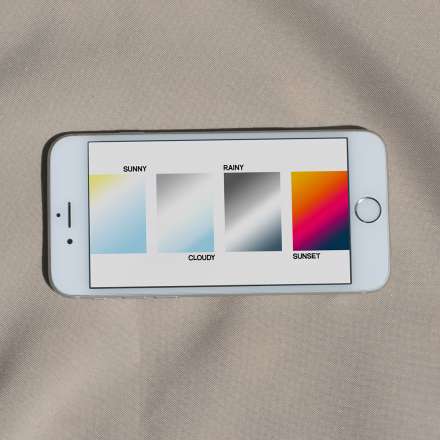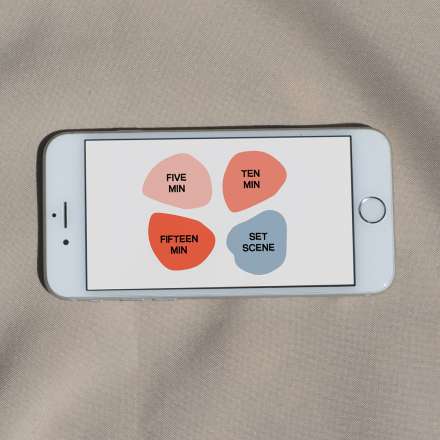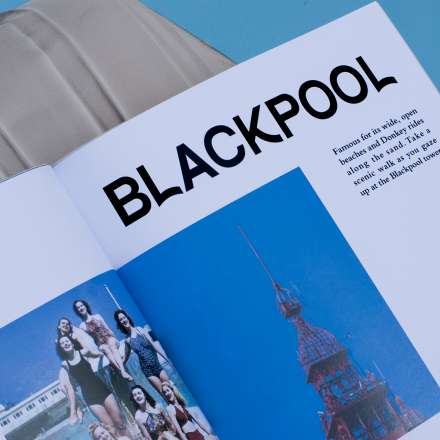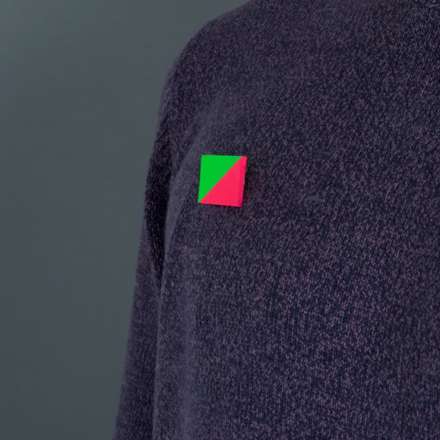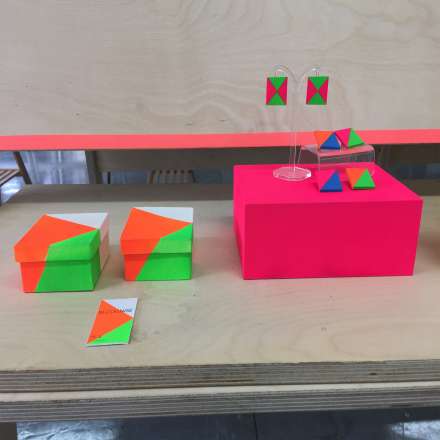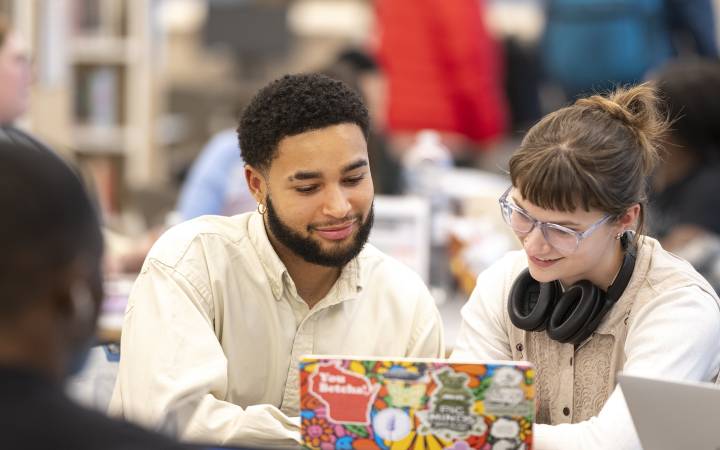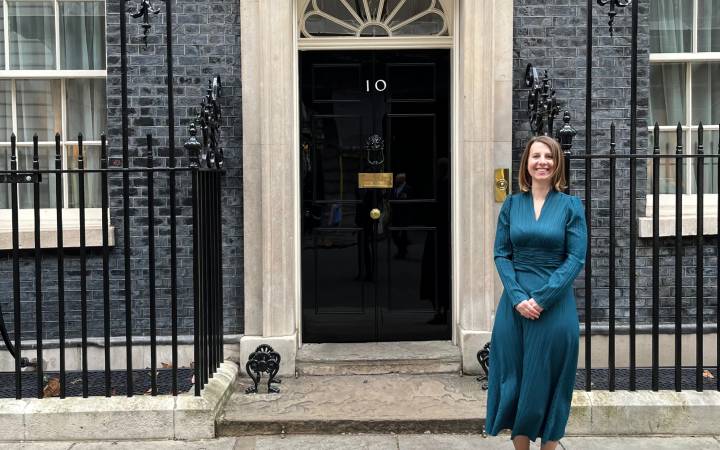Virtual reality seaside adventures and vivid jewellery: Kingston University graduates use design to raise awareness and help people with dementia
Posted Thursday 3 August 2017
 Graphic design student Emily McLoughlin Smith's virtual reality project comes with a guidbook for users, which her classmate Jacob Wise helped to design. PHOTO: Emily McLoughlin Smith
Graphic design student Emily McLoughlin Smith's virtual reality project comes with a guidbook for users, which her classmate Jacob Wise helped to design. PHOTO: Emily McLoughlin Smith
A Kingston University graphic design graduate has used virtual reality to bring the sights and sounds of the seaside to life, to help people with dementia reconnect with their history and stimulate memories.
Emily McLoughlin Smith created a virtual reality audio visual programme with an ageing population in mind. "My project Virtually Seaside is a holiday experience designed specifically for older people with dementia," she said. "Virtual reality technology has the ability to take you anywhere in the world from the comfort of your own home – I wanted to make it more accessible for people who can't venture that far anymore."
Flicking through black and white images of visitors to Brighton Pier in the 1950s and 1960s, Emily was left with a keen sense of nostalgia as she researched her final year project, which originally started as a branding project for the famous holiday attraction.
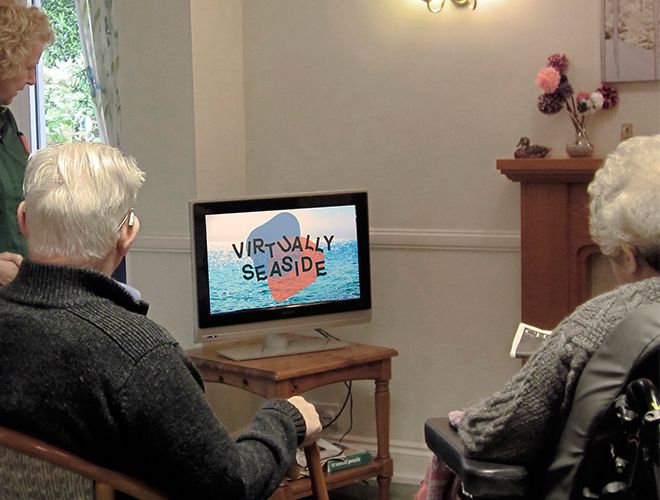 Emily's project 'Virtually Seaside' is designed to allow people with dementia to relive their seaside holidays.Hailing from Brighton herself, the 21 year old recreated images of a bygone era to encourage people with dementia to reminisce about their seaside vacations. "I spent a lot of time in care homes with residents and carers and it became clear how crucial it was to incorporate their past into my work – to recreate their old holiday memories through audio and visual stimulation," she explained. "Those visits helped me to understand their needs and inspired me to try and bridge the gap between a physical and virtual experience for them."
Emily's project 'Virtually Seaside' is designed to allow people with dementia to relive their seaside holidays.Hailing from Brighton herself, the 21 year old recreated images of a bygone era to encourage people with dementia to reminisce about their seaside vacations. "I spent a lot of time in care homes with residents and carers and it became clear how crucial it was to incorporate their past into my work – to recreate their old holiday memories through audio and visual stimulation," she explained. "Those visits helped me to understand their needs and inspired me to try and bridge the gap between a physical and virtual experience for them."
The Virtually Seaside experience is tailored to the individual. Users and their carers can look through options in a brochure together – designed in part by Emily's classmate Jacob Wise – and select the seaside town most relevant to their life. The carer is then asked to select the length of the 'walk' depending on the severity of the person's dementia and finally, the weather conditions can be adjusted to help inspire the user's journey down memory lane.
With Alzheimer's Society reporting 850,000 people with dementia in the UK – and that number set to rise to more than one million by 2025 – Emily's classmate Luke Seymour also decided to put his skills to the test to raise awareness of a particular type of the condition through design with his project Recognise.
Luke was inspired by the work of global charitable foundation the Wellcome Trust, which invited people to participate in their ‘Created out of Mind' project by visualising dementia through creative materials.
 Families of people with dementia can wear jewellery from Luke's project 'Recognise' to be easily identified.The 21 year old from Chelmsford, Essex responded to the brief by creating a range of jewellery after researching Posterior Cortical Atrophy (PCA), a form of dementia that affects a person's vision. "As PCA progresses, the person starts to lose facial recognition skills," he explained. "They find it easier to identify brightly coloured, contrasting objects – so I created jewellery for family members or friends to wear to help people with PCA recognise them, by associating them with their individual pieces."
Families of people with dementia can wear jewellery from Luke's project 'Recognise' to be easily identified.The 21 year old from Chelmsford, Essex responded to the brief by creating a range of jewellery after researching Posterior Cortical Atrophy (PCA), a form of dementia that affects a person's vision. "As PCA progresses, the person starts to lose facial recognition skills," he explained. "They find it easier to identify brightly coloured, contrasting objects – so I created jewellery for family members or friends to wear to help people with PCA recognise them, by associating them with their individual pieces."
Luke spoke to relatives of people with dementia to gain an insight into how the condition affects a family. "In this particular case, jewellery not only seemed to offer a creative solution to a problem experienced by many families, but it also allowed me to include the people affected by the condition in the design," he said.
The chunky, geometric shapes and bold neon and black colours of Luke's earrings and brooches were sculpted from acrylic glass and given a matte colour finish, as Luke found shiny surfaces were too distracting for people with PCA.
The students' final year designs impressed visitors to the Faculty of Art, Design and Architecture's annual Degree Show in June. In a return to its origins, the Faculty will be known as Kingston School of Art from September 2017. The new name reflects the faculty's legacy in an era when original thinkers are highly valued in the rapidly growing creative and cultural industries.
- Find out more about studying undergraduate graphic design at Kingston University.
Contact us
General enquiries:
Journalists only:
- Communications team
Tel: +44 (0)20 8417 3034
Email us


